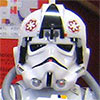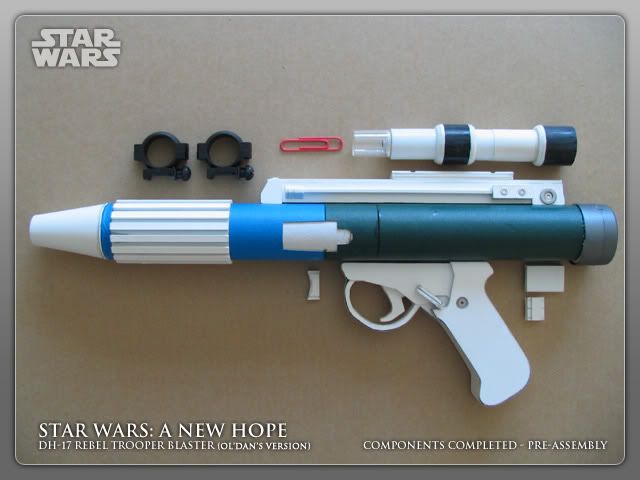
There're a couple of D.I.Y. DH-17 guides online. Tough part is getting the various raw materials e.g. PVC pipe, copper pipe reducers, the resin cast of the handgrip and end cap from a Sterling submachine gun, etc. Bloody headache because of the scale problem.
You get one component of the correct scale and something else doesn't fit. Drilling and stuff isn't my forte too for I'm more of an artisan.
So armed with my trusty NT cutter and paper-cutting knife plus loads of spare blades, I decided to do it the art-and-craft way.
The blaster is 85% cardboard with some pieces of plastic and metal (bulk from scope mount and the rest washers for 'detailing').
Component breakdown:
0) Four A3 size 2mm thick cardboard from Fancy Paper along North Bridge Road
1) Barrel - $3 cardboard canister for children's drawing block x2
2) Scope Rail (elongated white piece) - Cardboard
3) Handgrip (including trigger and all to the way to barrel support piece) - Cardboard ('safety catch' can swivel)
4) Conical barrel tip - Cardboard
5) Barrel 'ribs' - Cardboard strips
6) Misc. small blaster pieces - Cardboard
7) Scope - Main piece is a toilet roll spool (the one with the spring inside). The black bits are from a Kodak film cannister cut into half. The clear cap cover at the tip of the scope is from a white-board cleaning spray.
The red paperclip will be trimmed for use as the pointed thingy in the light amplifier piece.
8) End cap is from a Bodyshop shower gel (Just can't be bothered about the cap details)
9) Scope mounts purchased via eBay.
I'm not aiming for 100% screen accuracy. Pretty satisfied with what I have at the moment.
FINDING THE BLUEPRINT
Before I could get started, I needed to find out exactly how big the DH-17 blaster was. Master Replicas' site states its length as 19 inches. Was it that big?
To get a second opinion, I scoured the net for more info and came across the holy grail, a blueprint of the DH-17 blaster:
http://home.comcast.net/~wizardofflight ... ster15.gif
The blueprint puts the length of the blaster at close to 19 inches. To get a quick feel of things, I printed out a side view of the blaster from the blueprint, glued it on artcard, cut out the shape of the blaster and held it up.
It felt a little large. I decided to scale it down a little.
CONSTRUCTION
With the blueprint, I was able to determine how wide the blaster was too. Cutting out the printout of the handgrip, I traced its outline on the 2mm cardboard I spoke of earlier. I needed to stack 13 pieces of the handgrip piece to get the right thickness. So that was what I did:
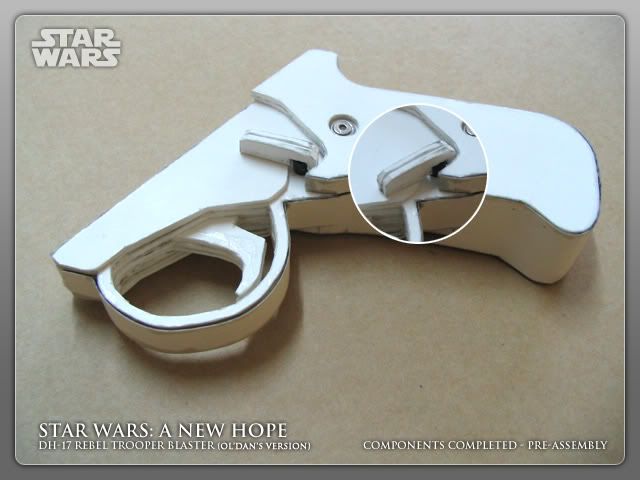
I built the handgrip from the inside out. The center three pieces are the only one with a 'trigger'. When stacked together, they amounted to the right thickness of the trigger piece. I sandwiched the trigger handgrip pieces with more trigger-less handgrip pieces:
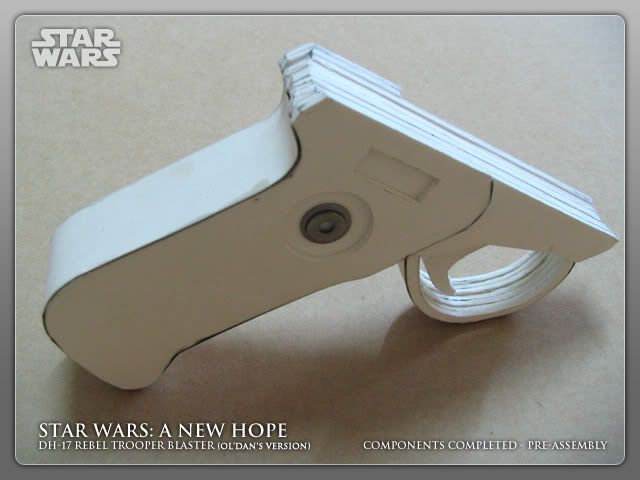
The handgrip was the most tedious because I had to be careful not to ruin the trigger guard. Cutting through 2mm thick cardboard is tricky business.
At the top of the handgrip is the barrel support. Before glueing the handgrip pieces together, I had to make a groove on top so that the handgrip piece can 'catch' the barrel's curved surface properly. I had to make the groove piece by piece, varying the angle of my blade. The cuts were gradual from the inside and becomes steeper on the outer pieces.
Done!
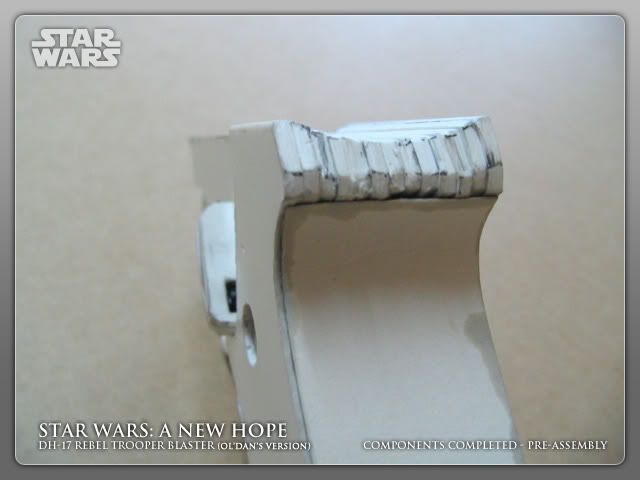
As mentioned earlier, the barrel comprises two cardboard cannisters used by school kids to keep their drawing block. Regretably, one cannister wasn't long enough to form the barrel so I had to join two pieces to get the right length. I stuffed in misc items inside the cannister to give the barrel some weight.
The blueprint above also came with the brilliant shape I needed to make the nozzel. I essentially constructed a 'skeleton' for the nozzel and wrapped a piece of artcard over it. I placed a washer on top to create an impression of the nozzel opening. The nozzel piece is 'gooped' (bought from hardware shop) to the top of the barrel.
The barrel 'ribs' bit was tricky, I had to measure the circumference of the barrel and subtract the width of the 16 rib strips (5mm each) and divide it by 16 to figure out the spacing between each rib. I had to draft out the measurements on PC and print it out to help me glue the ribs accurately.
Done!
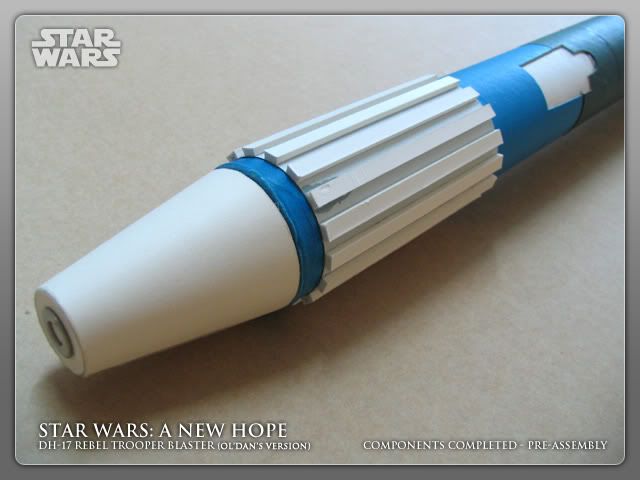
The 'Sterling End Cap' is merely a cap from a Bodyshop shower gel. I can't be bothered to do the detailing on the end cap. Maybe I can stick a rebel insignia there. HAHA!
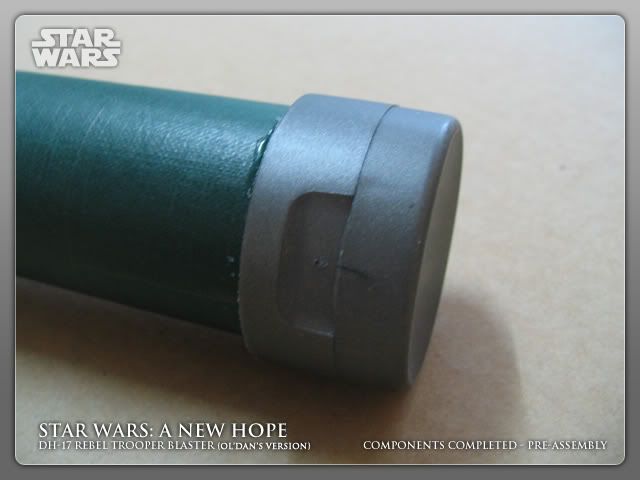
The scope rail or track (elongated white piece) was relatively easy to assemble. Once again, it required several pieces of the 2mm artcard to be glued together.
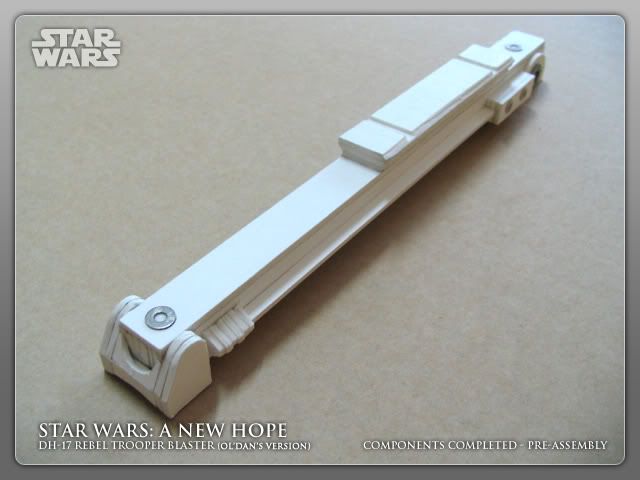
I also needed to make a groove at the bottom of the rail so it can rest of the curved surface of the barrel properly. It will subsequently be 'gooped' down.
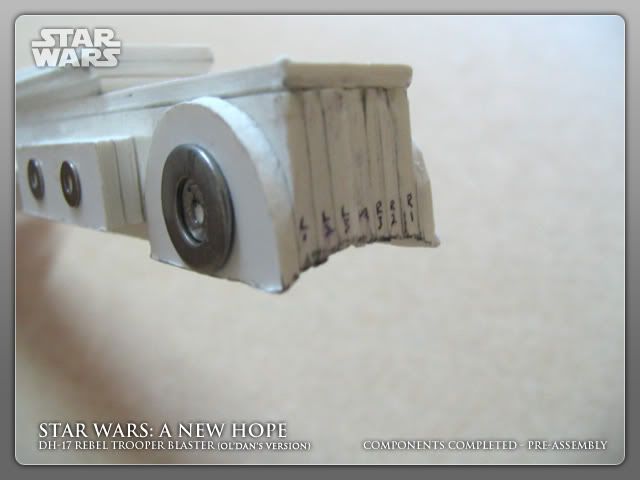
The numbering aids me in varying the angle of my blade when cutting the groove and also not to make any mistake when glueing the pieces together.
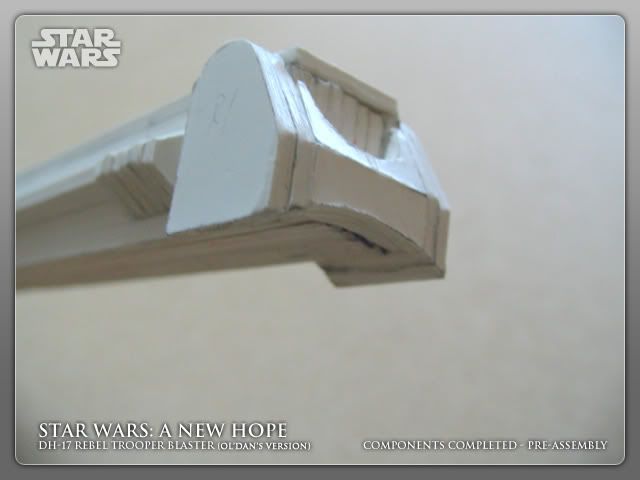
Front view of the scope rail piece.
The main scope body is a cheapo toilet roll spool used in most public toilets. The type with the spring in it. I cut a Kodak film canister into half for the center and back pieces. The pieces sandwiching the cannister bits are also artcard. It's like cutting a ring shape piece out of artcard at an angle to get an angled surface. Tricky but challenging.
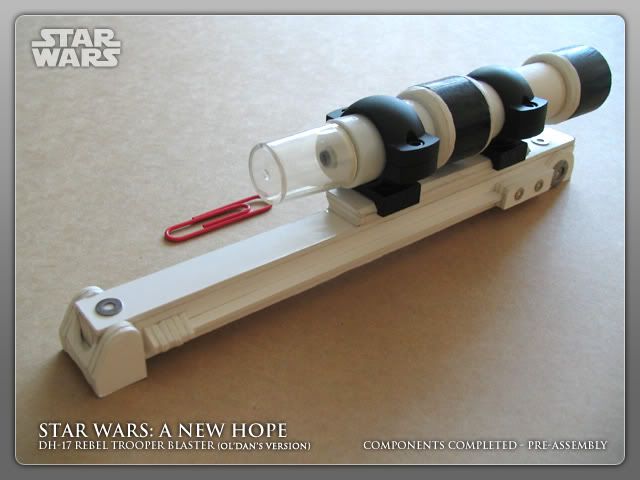
The scope mounts were purchased via eBay. Brand is SIMMONS. Standard mount for 1 inch scopes. Medium height with matt black finishing.
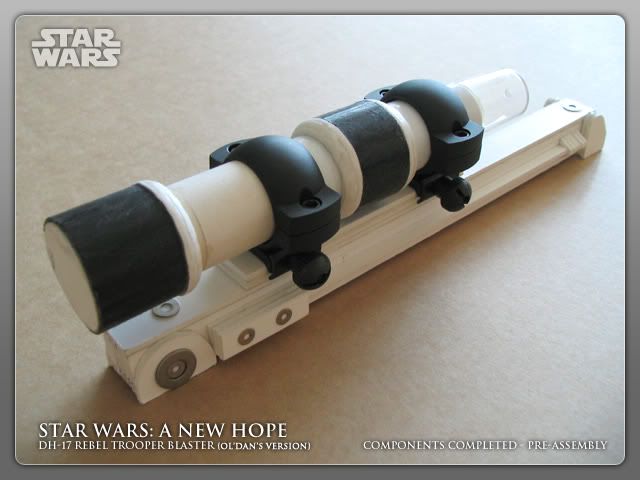
One good thing about the toilet roll spool is the tip of it has a small opening to shove a paperclip in. But it's a little wide for a paperclip but a bit of goop should do the job. To make the hole smaller, I shoved in one of those black rubber joint thingy from a Gundam model kit.
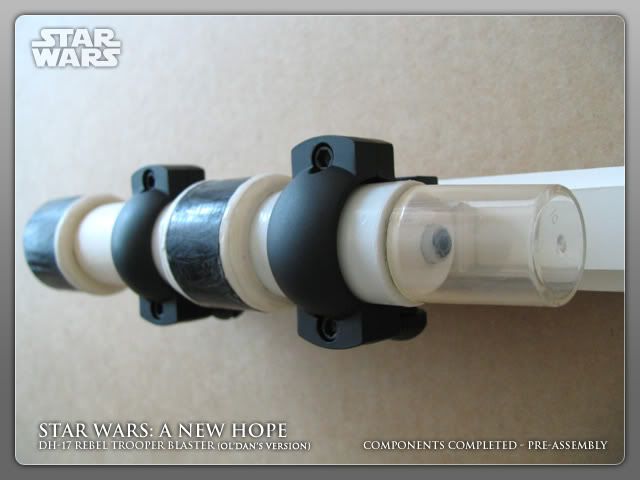
Clear cap is from a white board cleaning spray.
Next step is to glue the pieces together using HOUSEHOLD GOOP.
ASSEMBLY
Assembling the DH-17 was straightforward. I had placed markers on the barrel component to help me position the handgrip, scope rail and the misc bits.
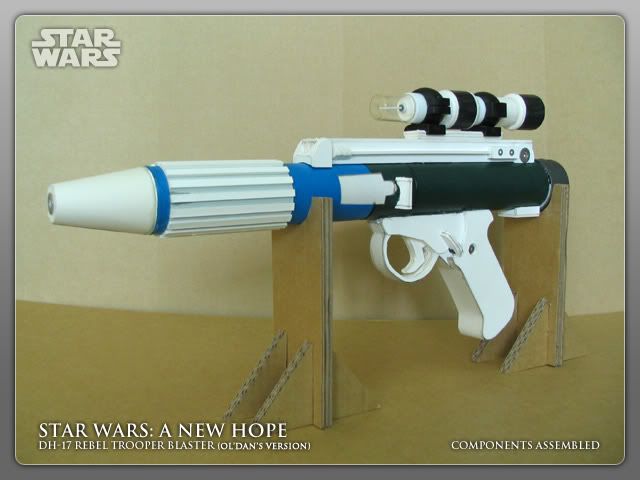
HOUSEHOLD GOOP was used to glue everything together. When using the GOOP, be sure to have lots of ventilation because the smell can be overpowering. Took 24 hours to completely harden.
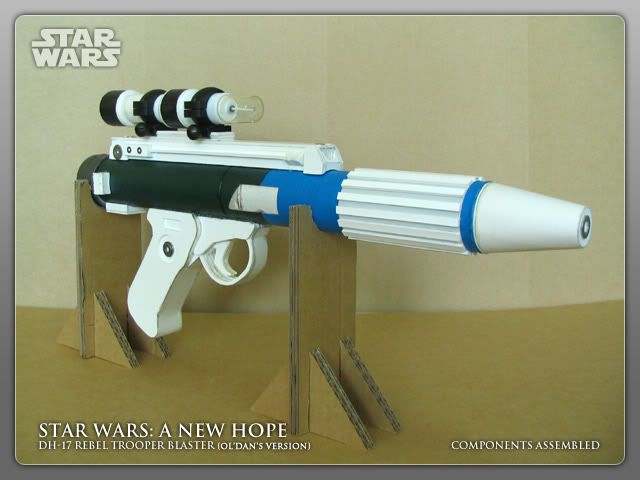
I shoved in a white paperclip into the 'Light Amplifier' scope component to get an idea how much I should trim the actual red paperclip.
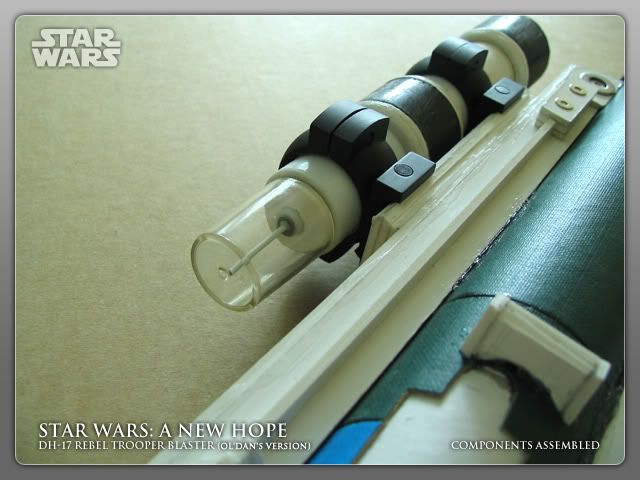
PAINTING - next day
The DH-17 is plain black and silver. I used the following spray paints:
RJ Pro F Acrylic Epoxy Spray Paint (available in most hardware shops)
04 - DULL BLACK - for most of the DH-17
36 - SILVER - for nozzel and barrel ribs + small bits on the left and right.
I constructed a stand to suspend the DH-17 and also rotate it for easy spray painting:
Left side done!
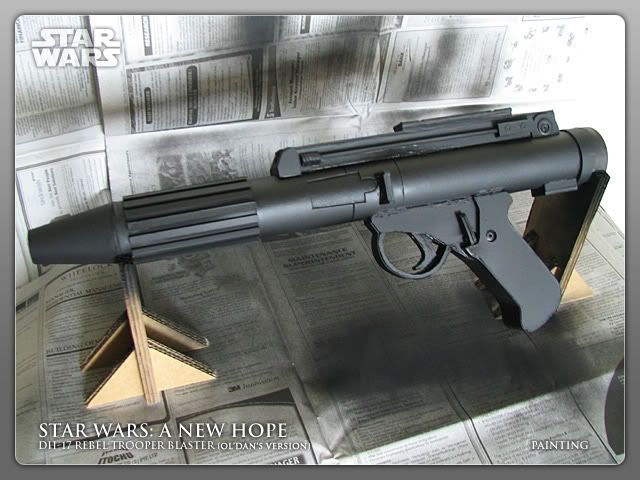
Rotate...spray...right side done!
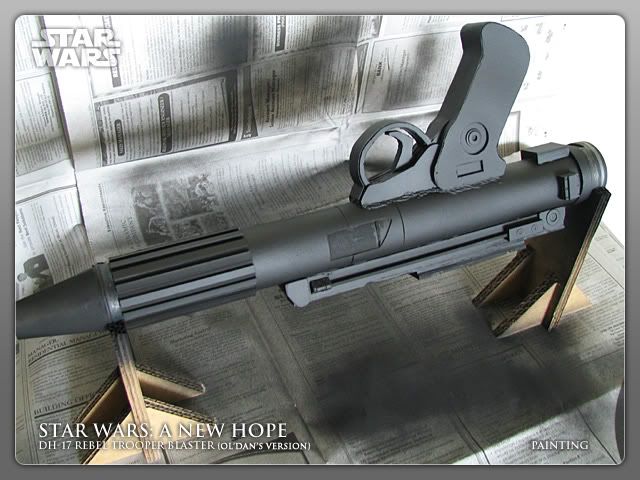
The paint didn't stick well to the end cap and flaked off soon after.
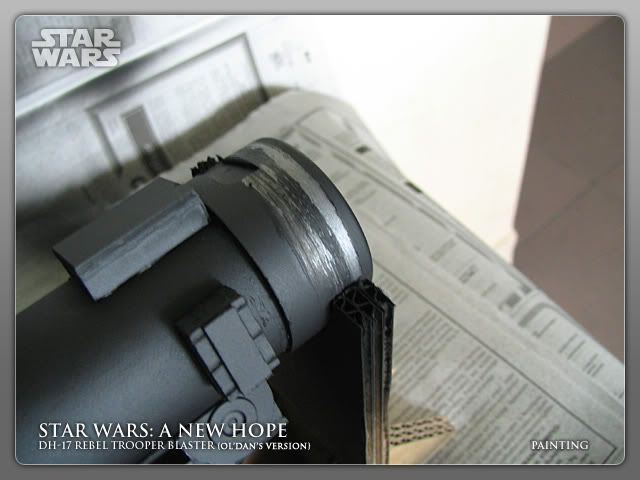
I decided to abort spraying for the rest of the day and used thin art card to encase the end cap (same thing for plastic bits on scope component as well):
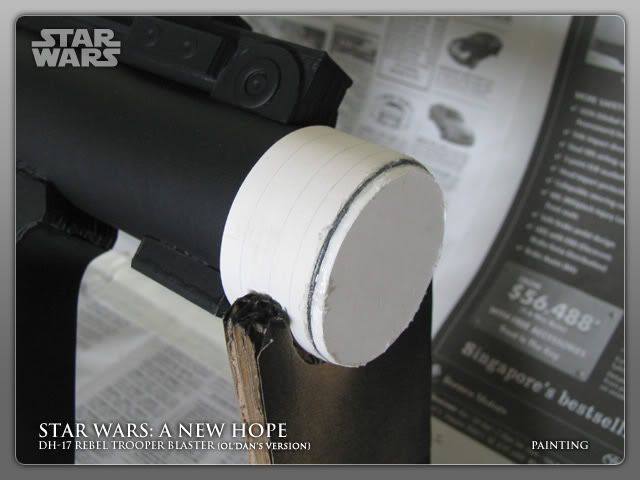
After the black bits were painted, I made a mask to expose the shapes ('magazine entry point') on the left and right sides of the barrel. A quick spray of silver and DH-17 was a step closer to completion:
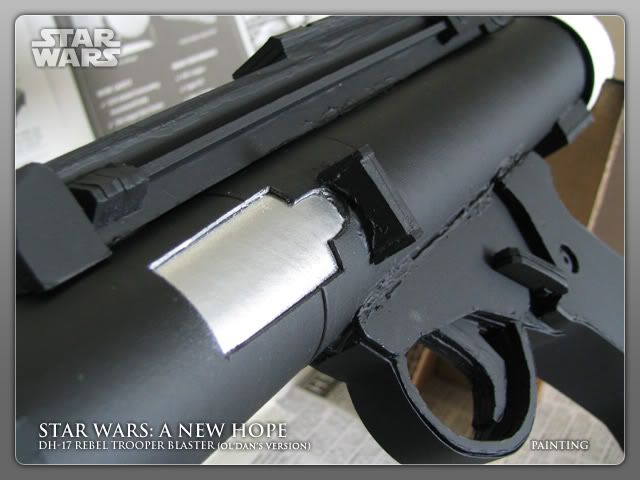
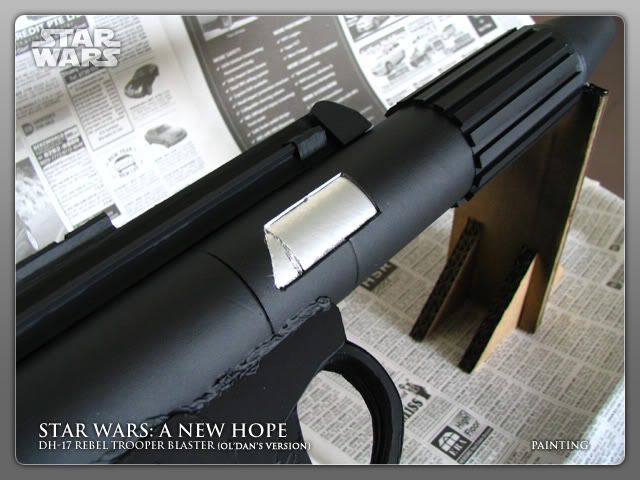
What remained to be painted was the nozzel and the barrel strips. I placed the lower half of the DH-17 into a ziplock bag and sealed the neck with masking tape, exposing only the parts to be painted silver:
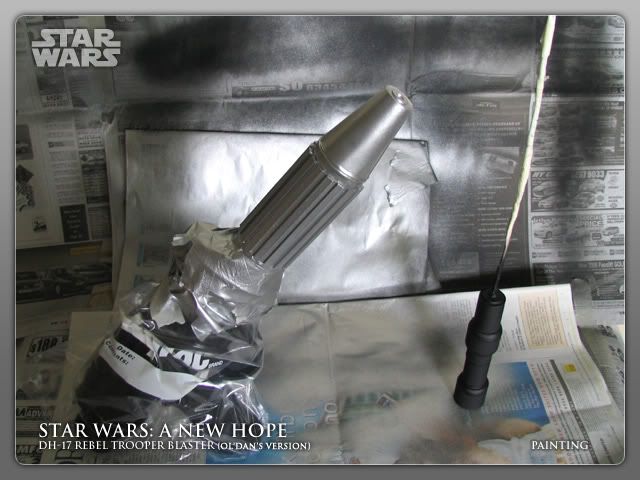
A couple of silver sprays and the nozzel and barrel strips were painted. Pictured with the DH-17 main component is the scope which I had already painted black. I 'skewered' the scope for easy spray painting.
Oddly, just when I thought the painting went without incident, the paint on one side of the nozzel started becoming 'patchy':
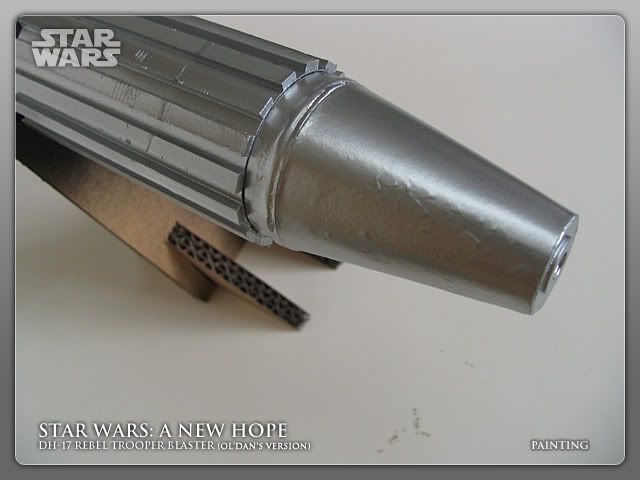
Same thing happened to certain areas on the scope and end cap. Well, can't win 'em all.
A small section of the handgrip is supposed to be painted silver but I'll ignore that detail for the time being.
While waiting for the paint to dry, I trimmed the red paperclip and gooped one end of it into the opening on the scope. I placed the clear cap on top of the scope and the DH-17's Light Amplification component was completed. I gooped the scope mounts onto the scope track and the DH-17 was finally completed:
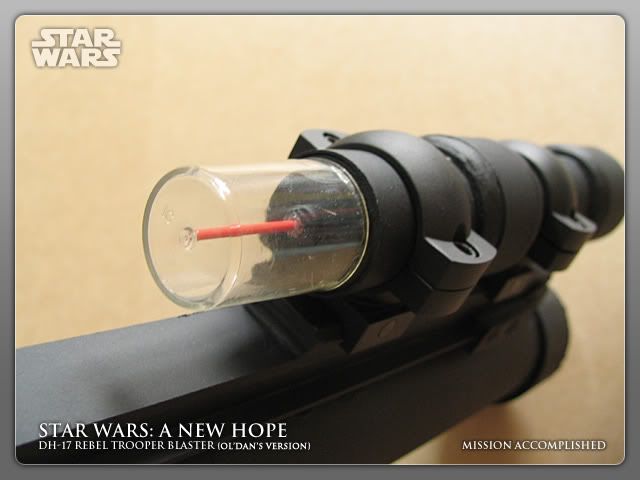
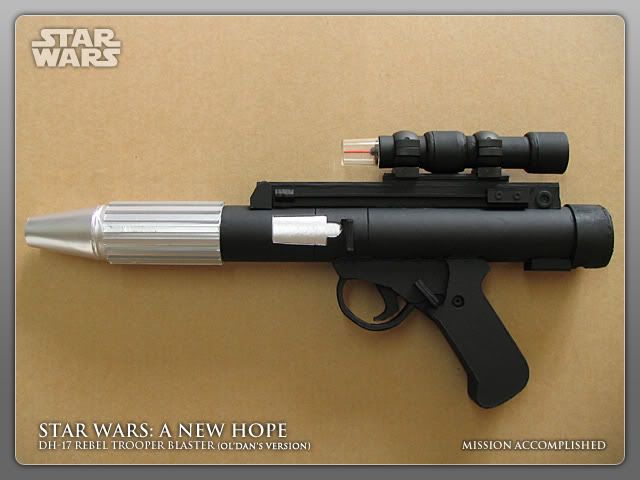
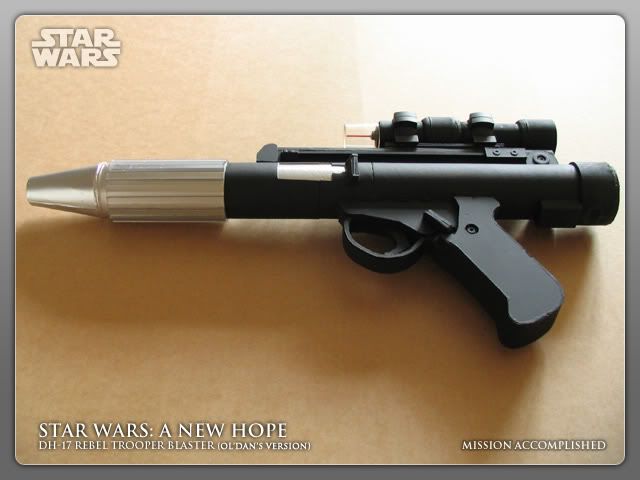
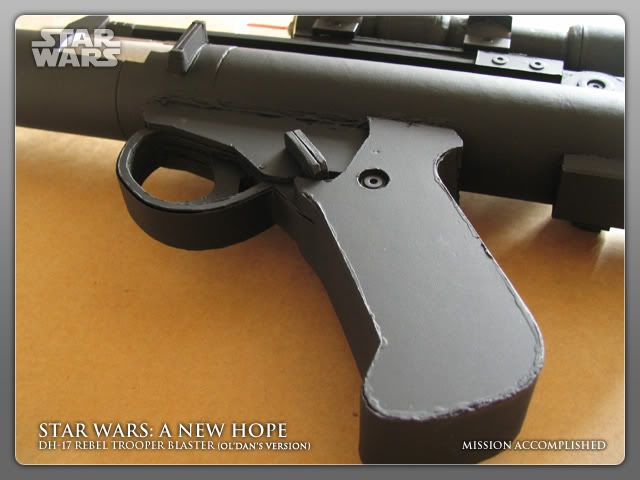
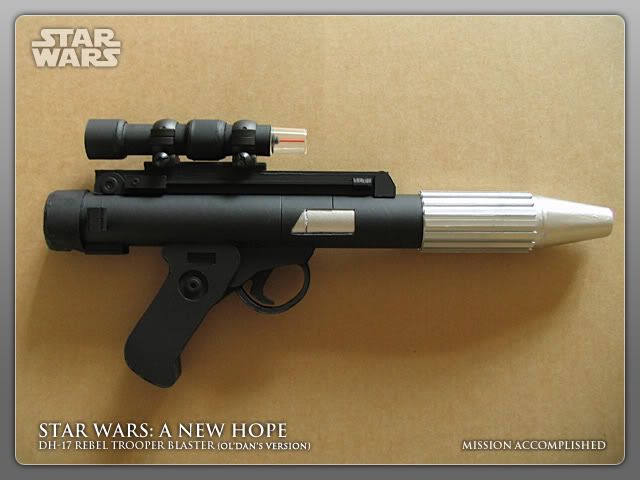
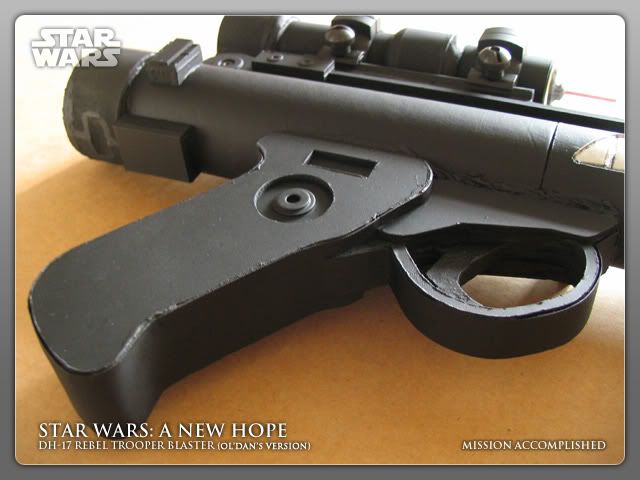
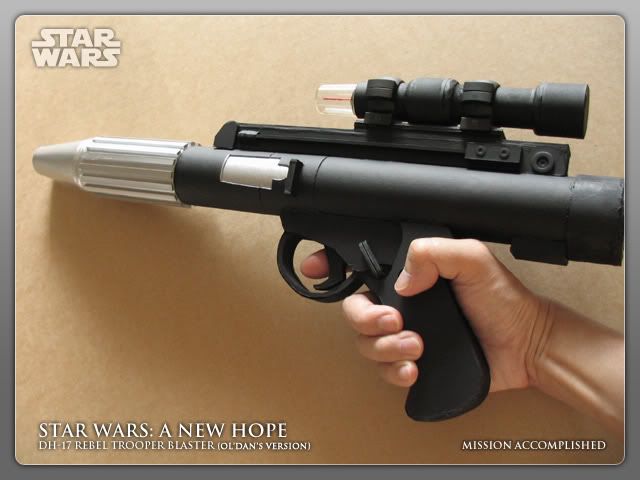
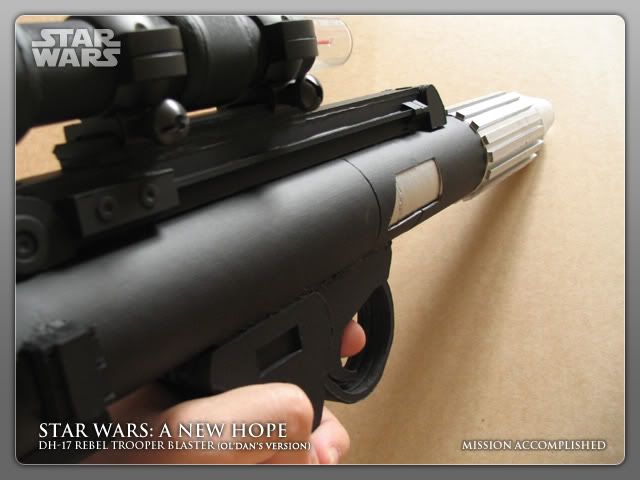
Epilogue:
The cardboard DH-17 is quite sturdy and should be able to tahan when I troop as a Rebel. While I'm not overly optimistic about the lifespan of this DH-17 (as compared to PVC and metal-made ones), I'm 100% proud of my 'baby'. Hell yeah! ;D
- THE END -
